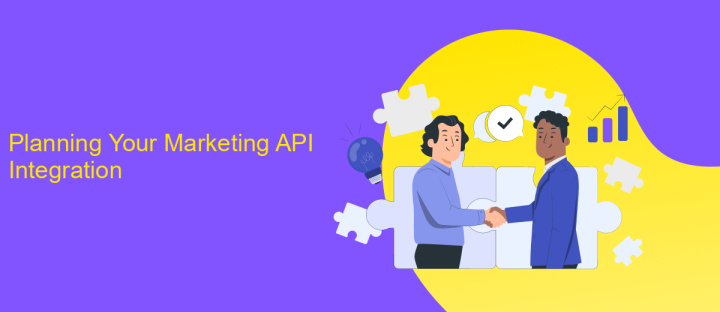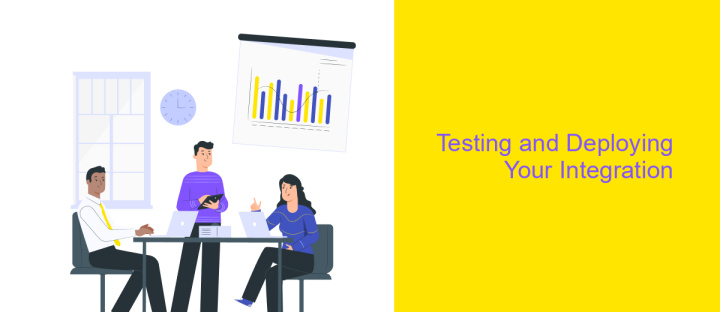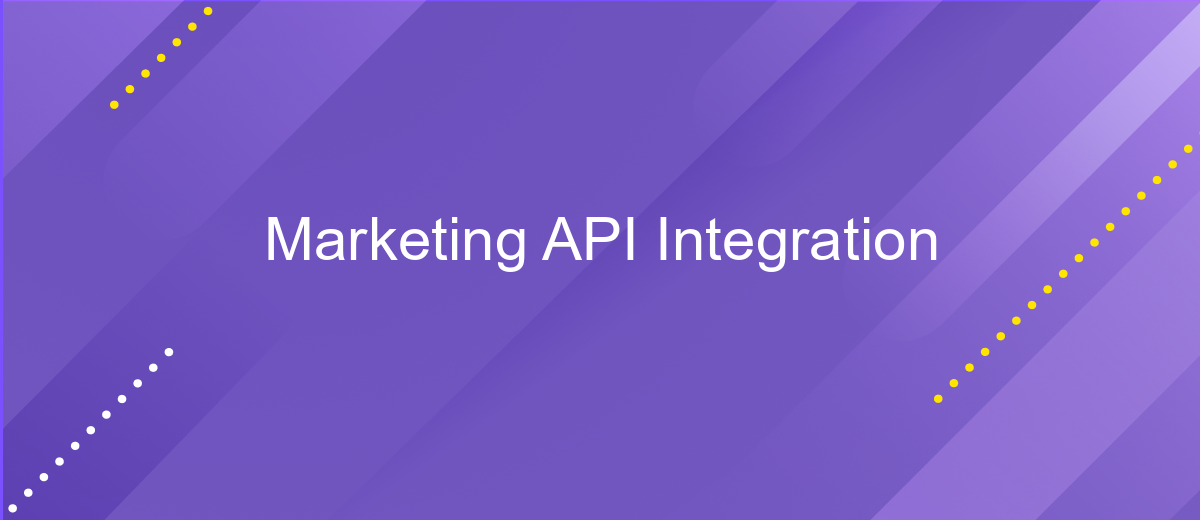Marketing API Integration
In today's digital landscape, integrating Marketing APIs has become essential for businesses aiming to enhance their marketing strategies and streamline operations. Marketing API integration allows companies to automate data collection, improve targeting, and personalize customer interactions, leading to more effective campaigns. This article explores the benefits and best practices of Marketing API integration, offering insights into how businesses can leverage these tools to maximize their marketing efforts and drive growth.
Understanding the Marketing API and its Benefits
Marketing APIs are essential tools that enable businesses to streamline and automate their marketing efforts by integrating various platforms and services. These APIs provide a standardized way for applications to communicate and exchange data, making it easier for marketers to manage campaigns, track performance, and optimize strategies. By leveraging Marketing APIs, companies can enhance their marketing capabilities and achieve better results.
- Automation: Marketing APIs allow for the automation of repetitive tasks, saving time and reducing errors.
- Data Integration: They facilitate seamless data exchange between different marketing platforms, providing a unified view of marketing efforts.
- Scalability: APIs enable businesses to scale their marketing operations efficiently by integrating new tools and services as needed.
- Customization: They offer the flexibility to tailor marketing strategies to specific business needs and objectives.
Understanding and utilizing Marketing APIs can significantly benefit businesses by enhancing their ability to manage and optimize marketing campaigns. With the right API integration, companies can gain valuable insights, improve customer engagement, and ultimately drive growth. As the marketing landscape continues to evolve, APIs will remain a crucial component in achieving competitive advantage and operational efficiency.
Planning Your Marketing API Integration

When planning your marketing API integration, it's essential to start by clearly defining your objectives. Determine what you aim to achieve with the integration, whether it's automating repetitive tasks, enhancing data accuracy, or improving customer engagement. Understanding your goals will guide you in selecting the right API and ensure that the integration aligns with your overall marketing strategy. Additionally, assess your current systems and processes to identify any gaps or areas that can be optimized through API integration.
Once your objectives are clear, consider leveraging tools like ApiX-Drive to simplify the integration process. ApiX-Drive offers a user-friendly platform that allows you to connect various marketing applications without requiring extensive technical expertise. This can save time and resources, enabling your team to focus on strategic initiatives rather than technical challenges. Ensure that you also plan for ongoing maintenance and updates, as APIs and marketing tools are constantly evolving. By taking a strategic approach to your marketing API integration, you can enhance operational efficiency and drive better marketing outcomes.
Technical Implementation and Key Considerations

Integrating a Marketing API requires careful planning and execution to ensure seamless functionality and data flow. The first step is to thoroughly understand the API documentation, which provides essential information on endpoints, authentication, and rate limits. This groundwork is crucial for setting up the integration environment and avoiding common pitfalls.
- Authenticate using the API's preferred method, often involving OAuth tokens or API keys.
- Set up error handling to manage potential issues such as rate limiting or invalid requests.
- Implement data validation to ensure that the data being sent and received meets the expected formats and constraints.
- Regularly monitor API usage to optimize performance and avoid exceeding limits.
- Ensure compliance with data privacy regulations, such as GDPR, when handling user data.
Beyond technical setup, consider the long-term maintenance of the integration. APIs frequently update, necessitating ongoing adjustments to your implementation. Establishing a robust monitoring and logging system can help quickly identify and resolve issues. Additionally, fostering a relationship with the API provider can offer insights into upcoming changes and potential enhancements to your marketing strategy.
Testing and Deploying Your Integration

Before deploying your Marketing API integration, it's crucial to thoroughly test its functionality. Begin by setting up a staging environment that mirrors your production setup. This allows you to identify and rectify any issues without affecting your live environment. Ensure that all endpoints are correctly mapped and that data is accurately transmitted between your application and the API.
Utilize automated testing tools to simulate various scenarios and edge cases. This step is essential to verify the robustness and reliability of your integration under different conditions. Additionally, involve a team of testers to perform manual testing, focusing on user experience and potential usability issues.
- Verify authentication and authorization processes.
- Test data synchronization and consistency.
- Check error handling and logging mechanisms.
- Conduct performance and load testing.
Once testing is complete and you're confident in the integration's stability, proceed to deploy it to the production environment. Monitor the integration closely during the initial phase to quickly address any unforeseen issues. Regularly update and maintain your integration to ensure compatibility with API updates and evolving business needs.


Maintaining and Optimizing Your Marketing API Integration
Maintaining and optimizing your marketing API integration is crucial for ensuring seamless data flow and maximizing the effectiveness of your marketing strategies. Regularly review API documentation and updates to stay informed about any changes or new features that could enhance your integration. Implementing automated monitoring tools can help detect issues early, allowing for quick resolution before they impact your campaigns. Additionally, ensure your API integration is scalable to accommodate growing data volumes and evolving business needs.
Optimization involves not only maintaining the technical aspects but also refining the data usage to improve marketing outcomes. Utilize services like ApiX-Drive to streamline the integration process, reducing manual efforts and potential errors. ApiX-Drive offers a user-friendly interface for connecting various marketing platforms, ensuring that data is accurately synced across all channels. Regularly analyze the performance metrics of your API-driven campaigns and adjust your strategies accordingly to achieve better ROI. By continuously optimizing both the technical and strategic elements, you can leverage your marketing API integration to its full potential.
FAQ
What is a Marketing API Integration?
How can Marketing API Integration benefit my business?
What are the challenges of Marketing API Integration?
How do I choose the right tool for Marketing API Integration?
Is it necessary to have technical skills to implement Marketing API Integration?
Time is the most valuable resource for business today. Almost half of it is wasted on routine tasks. Your employees are constantly forced to perform monotonous tasks that are difficult to classify as important and specialized. You can leave everything as it is by hiring additional employees, or you can automate most of the business processes using the ApiX-Drive online connector to get rid of unnecessary time and money expenses once and for all. The choice is yours!

